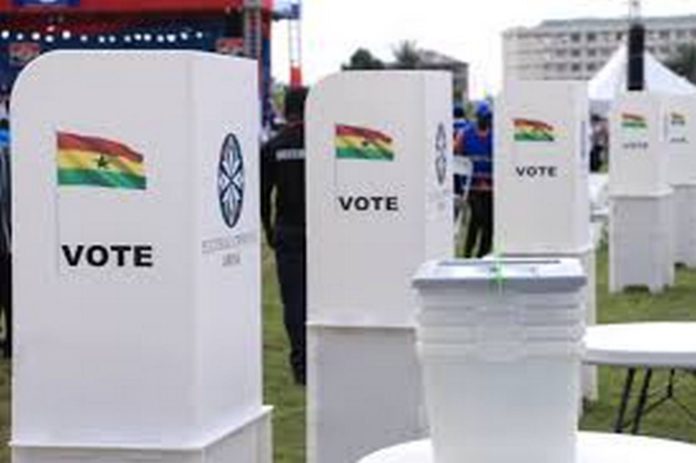Ahead of the December general elections, the Electoral Commission (EC) has explained some terminologies used in their work.
What are Rejected Ballots?
Before we understand what rejected ballots are, it is important to distinguish between spoilt ballots and rejected ballots, as the public, including the media, sometimes confuse these two terms.
Spoilt Ballots vs Rejected Ballots
Spoilt ballots are not found in the ballot box, whereas rejected ballots are found in the ballot box at the close of voting.
Spoilt ballots are ballot papers that have been detached from the booklet but, for various reasons, could not be used by the voter. Some of the reasons for the ballot being treated as a spoilt ballot include:
1. A voter, after thumb printing the ballot paper but before putting it into the box, has a change of mind and surrenders the ballot paper for a new one.
2. A ballot paper, after being detached, is found with marks that could cause it to be rejected if used. The ballot paper is therefore surrendered for a new one.
3. A ballot paper, after being given to the voter, gets soiled.
4. The ballot paper, in the process of tearing from the booklet, gets torn.
5. The ballot paper, in the process of tearing from the booklet, has part of the serial number or photo of a candidate left on the counterfoil.
In each of these situations, two lines will be ruled on the face of the ballot paper, and the word “SPOILT” inscribed on the ballot paper by the Ballot Issuer.
What are Rejected Ballots?
Rejected ballots are ballots cast by voters, which the Presiding Officer determines, while sorting the ballots at a polling station, to be void and therefore not counted for specified reasons as provided by law. There are five reasons why a ballot paper may be rejected.
These are:
- A ballot paper without an official mark (validation) at the back, as illustrated in the images below.


2. A ballot paper with more than one mark, i.e. the voter thumb printed for more than one candidate.

3. A ballot paper with a mark making it difficult to determine the choice of the voter, i.e. the mark strayed into another candidate’s box.

4. A ballot paper with a mark that identifies the voter, i.e. the secrecy of the ballot is breached.

5. A ballot paper without any mark at all, i.e. the voter did not make a choice.

The Process of Declaring a Ballot as Rejected
There are often disputes during the process. The law stipulates that before rejecting a ballot paper as void, the Presiding Officer shall:
(a) Take proper precautions to prevent a person from seeing the serial number printed on the ballot paper;
(b) Show the ballot paper to each candidate or the counting agent of the candidate, if present;
(c) Give the candidate or the counting agent of the candidate an opportunity to express an opinion on the matter.
Ultimately, the Presiding Officer has the final say in determining that a ballot is rejected and should therefore not be counted. The law also requires the Presiding Officer to prepare a full accounting of rejected ballots, the reasons for the rejection, and whether any candidate or their representative objected to the rejection. All ballot papers marked “REJECTION OBJECTED TO” are placed in a separate envelope and delivered to the Returning Officer, who will re-examine the ballot papers and make a final decision on them.
Handling Ambiguous Marks
What happens if there is any other mark on the ballot paper that does not fall under any of the five reasons provided by law, yet the choice of the voter is clear and beyond doubt? The Commission’s position is that if the mark does not breach any of the reasons specified by law and the voter’s choice is clear, the ballot must not be rejected.
Please see the Figure below.

Source: EC Communications Team

